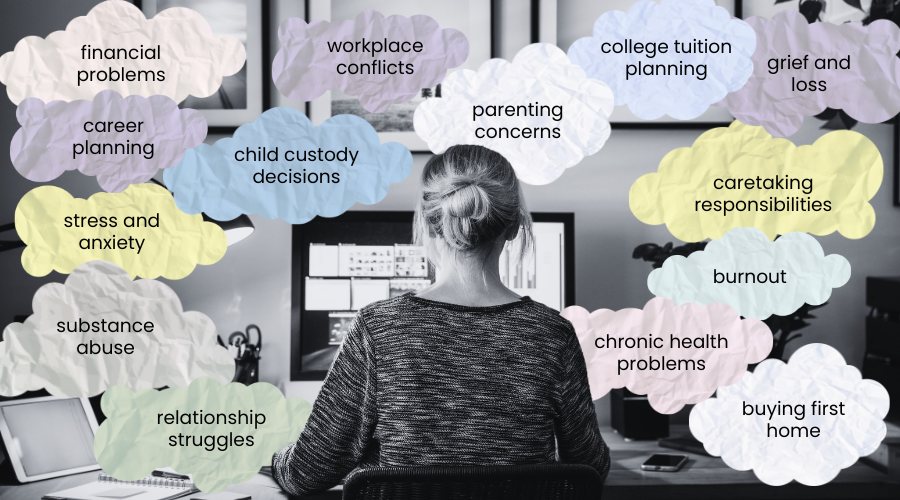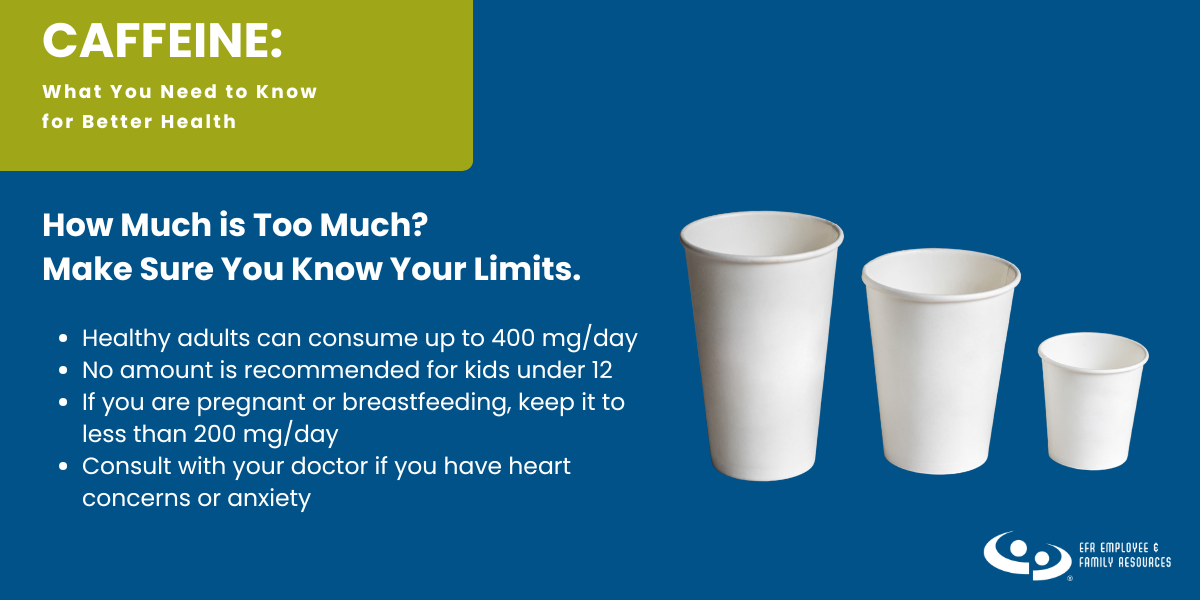With the toll of sustained stress and uncertainty weighing on your team members, mental health is no longer a buzzword. It’s a foundational strategy for a productive, healthy, engaged workforce. Let’s explore the critical role of mental health in our professional lives and how leaders can step up to create space for their people to thrive.
The Hidden Cost of Unaddressed Mental Health Issues
At a time when 1 in 4 adults experience mental illness in a given year but only one in three who need help receive it, leaders must empower their teams to care for their mental health. When your employees are physically at work but mentally checked out, the quality of work plummets, productivity suffers, and the risk of accidents or injuries surges.
Mental Strains Drain Your Bottom Line
Reflect on a time when personal struggles, whether a divorce, financial insecurity, caring for an aging relative, or parenting challenges clouded your focus at work. It’s impossible to leave your problems at the office door; they follow you as relentless distractions, stealing your focus and sapping your concentration and energy. Your colleagues carry the weight of these unseen burdens, leading to considerable indirect costs from increased healthcare expenditures, lost productivity, unplanned absences, turnover, disengagement, and accidents. Consider these startling figures:
- Absences for mental health issues increased by one-third from 2022 to 2033 and by 300% between 2017 and 2023.
- 87% of employees would consider leaving a company that does not focus on their well-being
- More than half of workplace injuries are related to stress and anxiety.
- Over half of employees say their emotional distress impacts their ability to do their job well.
- Neglecting mental health care can double the risk of physical ailments like heart and metabolic diseases, especially in those with serious mental conditions.
Addressing mental health is not just about cultivating a positive work environment; it’s about safeguarding the very heart of your organization—the health and well-being of your team.
Investing in Mental Well-Being Pays Off
The cost of doing nothing is significantly higher than investing in mental health. In fact, for every $1 spent treating mental health concerns, there is a $4 return in improved health and productivity. When leaders prioritize supporting the people behind the work titles, they create an environment where team members are empowered to bring their best selves to work.
Studies highlight the tangible benefits: employees who feel their well-being is a priority are 1.2 times more likely to report high productivity. Furthermore, those who feel supported at work are twice as likely to consider themselves in good overall health.
Supporting your employees within the full context of their lives doesn’t just send a strong message about your organization’s values. It demonstrates your commitment to providing the necessary tools for success, ultimately nurturing a culture of trust, loyalty, and belonging essential for sustained engagement and success.
9 Ways to Champion Your Employees’ Mental Well-Being
As someone in a leadership role, you are uniquely positioned to advocate for a culture shift that prioritizes employee well-being and mitigates the high costs of turnover, presenteeism, absenteeism, and escalating health issues. Here are a few ways you can begin building a culture that champions the mental well-being of your team:
1. Understand Available Benefits
Your team members will need different kinds of support at times, and it’s essential to familiarize yourself with available resources when they approach you for guidance. Research your organization’s policies on PTO, wellness time off, flexible work schedules, FMLA, professional development, student loan reimbursement, and other benefits. Remember, your EAP offers free, comprehensive, confidential services for your team and their family members, and you can view the benefits here.
Maximize the Value and Benefits of Your EAP
- guide you through the robust features of your EAP
- share practical strategies to help you effectively access and champion these resources
- provide insightful approaches to dispel mental health stigma in the workplace
Watch now to discover how to enhance well-being in your workplace, encourage help-seeking behavior, and effectively address the stigma around mental health!
2. Promote Available Benefits
Consistently remind your team of the resources available through their EAP by forwarding newsletters, posting flyers in common areas, and mentioning them during meetings. Use encouraging messaging that emphasizes these services are available because you want employees to be able to bring their best selves to work. Shame, stigma, and lack of understanding of how the confidential services work may prevent some from taking advantage, and you can help normalize their use by mentioning when you utilize them.
3. Don’t Force Conversations About Mental Health
While building a welcoming culture where talk about mental health is met without judgment, be careful not to be overbearing. A culture shift will not happen overnight, and attempts to force change by asking direct questions about individuals’ mental health may feel interrogating and is, at best, awkward, embarrassing, and uncomfortable.
4. Take a Caring Approach to Performance Issues
Sometimes, mental health problems will impact your team’s performance. When addressing the subject, be careful not to take a punitive approach.
Here’s how you could start the discussion
“I want to take some time to chat about how you’re doing. I’ve noticed you don’t seem exactly like yourself. Is there anything you’re concerned about? How could we help you feel more comfortable and supported at work?”
Demonstrate care and concern without acting as the problem-solver for your employee’s personal issues. They may worry you view them as incompetent or incapable, undermining their confidence. Instead, offer guidance by acting as a bridge to resources. Doing so empowers your team members to make the best decisions for their lives, equipping them to bring their best selves to work.
5. Check In With Your Team
Every individual on your team faces unseen challenges. Do you notice when someone is overwhelmed in meetings, has trouble speaking up, or seems distracted? Regular check-ins with your team members can help you recognize when they are struggling, allowing them an opportunity to share their concerns privately. Knowing you’re there to listen and support them can provide a sense of relief and create an atmosphere where they feel secure enough to ask for help. When an employee shares a mental health concern, you won’t always know what to say or do- that’s okay! What matters is providing a space where they feel heard.
6. Listen with Empathy
When an employee shares a mental health concern, take an empathetic, nonjudgmental approach. Practice active listening by repeating or rephrasing what they told you, asking questions, and seeking clarification. Respond supportively by acknowledging their difficulty, reassuring them, and suggesting a potential accommodation
Here’s how you could respond when a team member shares a mental health concern
“Thank you for telling me this. I know it can feel nerve-wracking to bring this up to a manager. Please know this won’t jeopardize your position and I want to support you as best I can. How would you feel about [specific accommodation]?”
When suggesting an accommodation, be sure you can fulfill your proposed solution. If you can’t deliver a specific accommodation, brainstorm other ways to meet their needs. For example, an easily distracted or anxious employee may be unable to work from home full-time. Can you provide a quieter space for them to work? Can they be present for meetings and then work from home? Is a flexible schedule an option?
7. Lead with Vulnerability
Leaders must be the ones to start the conversation about mental health. Mental health stigma is pervasive, and employees may be concerned about how sharing struggles will affect their treatment. They may fear being labeled too emotional or incompetent, passed over for promotions, micromanaged by superiors, and given fewer development opportunities. By sharing when you are struggling, you open the door to honest conversations and demonstrate vulnerability; it’s a valuable reminder of our shared humanity beyond the job titles. Authenticity cultivates trust, improving your team’s loyalty, performance, and productivity.
Here’s how you could demonstrate vulnerability
“The telltale signs of burnout for me are when I start to procrastinate or feel cynical more days than not. It’s okay if you notice this, too, and you can always let me know. We’ll find a way to make things more manageable.”
8. Set an Example of Well-Being
When it comes to well-being, demonstrate how you practice self-care; your actions give your team permission to care for their needs. Setting an example makes your team feel safe prioritizing self-care and setting boundaries to maintain their well-being.
Here’s how you could model expected behavior when it comes to caring for your well-being
“Even though I’m often tempted to work 24/7, I’ve started making an effort to take better care of myself. I took some time off this week to spend with my family, and I’m going to stop replying to emails over the weekend. I hope you and our team know I’d love to see you do the same.”
9. Over-Communicate
Uncertainty breeds stress, making communication key to your team’s well-being. Employees who felt managers weren’t good at communicating were 23% more likely to experience mental health problems!
Be sure to keep your team in the loop about organizational changes, updates on work policies, and who or where to go for support when needed. Set clear expectations for work hours, and be upfront about which responsibilities take priority and which can be put on the back burner if workloads become heavy.
Your team should clearly understand how their tasks tie into your organization’s objective. Clarity helps your team understand the “why” behind their work, giving them a sense of responsibility and ownership. With a focused goal in mind, your employees become active, engaged advocates for your organization.







